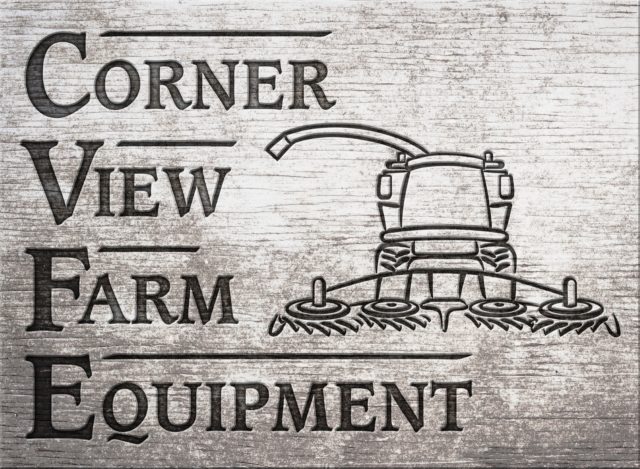Dear Editor, I would like to start out this letter with a compliment on the usual content of Progressive Dairyman and the focus of reaching the progressive dairy operators with an optimistic message.
However, I would like to comment on the May 2, 2009, issue and the article on pages 44-47 which was submitted by Nate Zwald entitled “Producers share their crossbreeding results.”
His current article on crossbreeding is well over the line of fairness and common sense. Alta Genetics has never hidden their opinion of crossbreeding as an option for commercial production genetics, being the only U.S.-based AI organization to never offer the option and so it seems that Nate Zwald has been waiting for an opportunity to use his open forum in your publication to promote the Alta line on the subject of crossbreeding.
The Zwald article starts out with the statement that imports of semen into the U.S. from the Swedish Red and Montbeliarde breeds were ‘reportedly’ down in 2008. This is not a factual statement.
In fact, sales of these breeds for Select Sires were at a record level in 2008, following the same pattern of record growth in sales of 2007 and prior years. Creative Genetics of California has the U.S. distribution rights for the Swedish Red breed from Viking Genetics. Creative Genetics also has the U.S. distribution rights of most of the Montbeliarde sires available in Europe through Coopex. Creative reports the same trend with record sales in 2008, following record sales in prior years. Select Sires was fortunate to be given the distribution rights to the Swedish Red and Montbeliarde breeds through a marketing agreement with Creative Genetics in 2004.
The factual summary is that sales of semen from the Swedish Red and Montbeliarde breeds continued to increase in the U.S. in 2008. I would not expect to be asked to report about the semen sales of Alta Genetics, and conversely I would not expect to receive semen sales reports of Select Sires or Creative Genetics from an Alta employee.
Zwald also mentions early in the article that the quantity of data in crossbreeding studies has ‘not been as comprehensive as many had hoped.’ Yet the article tries to represent a science-based conclusion from only two herds, one of which utilized only Jersey sires in their in-herd trial.
So, basically, Zwald has attempted to make his point on the lack of expected results of the Swedish Red and Montbeliarde crosses with data from only one dairy, which also is unnamed. Data from only one unnamed dairy operation to make a point is obviously not a good summary of any research or to reach a reasonable conclusion.
Based on valid research, it has become apparent that if a dairyman chooses to crossbreed Holsteins, a three-way cross utilizing the Swedish Red and Montbeliarde breeds offers the best combination of results for productivity and profitability. While crossbreeding is not likely an option that will be utilized by all dairies in the U.S., it is certainly a viable option to consider for enhancing profitability, especially where facilities call for smaller-framed, fertile and more durable cows.
The University of Minnesota, Select Sires, Minnesota Select Sires, Creative Genetics, Viking Genetics and Coopex are currently funding a well-designed study in the second year of an eight-year trial being conducted in 10 Minnesota dairy operations that should yield a definitive conclusion on the profitability of the Holstein/Swedish Red/Montbeliarde three-way cross compared to the straight Holsteins.
Lyle Kruse
VP U.S. Market Development
Select Sires
Plain City, Ohio
Dear Editor,
I am an Alta customer as well as a crossbreeder for a few years on a part of my herd with Jerseys and some European breeds. I am also still learning about those crosses Nate Zwald was referring in his article, but looking at my experience on the health side, there’s no comparison in my mind. I just don’t recognize my experience in that article. Knowing Alta Genetics for the seriousness of their genetic program and excellent sires they are marketing, I could not believe what I was reading.
The data related by Nate Zwald come from low numbers and look incomplete and unverified. An example is comparing “percent sold and died greater than 60 days in milk (DIM),” but we all know that problems on cows happen around calvings and not after 60 days in milk. Then, I learned that 305 ME is not accurate for crosses. Real first-lactation productions have to be shown.
If the truth about crosses must come out, it is not through a marketing guy but through a well-planned study, and I regret to say, but California datasets have been released so far in the Journal of Dairy Science, so as a dairyman, I feel better about it.
I do appreciate the Alta Advantage program, and I guess they should better stick to talking about it.
These are just the feelings of a dairyman who works everyday with pure Holsteins and crosses. I hope Swedish Red and Montebeliarde promoters in the U.S. will have a right to answer to that article.
Pablo Alameda
Dairy producer
Sonora, Mexico
Do you have an opinion? Send letters to the editor to editor@progressivedairy.com




